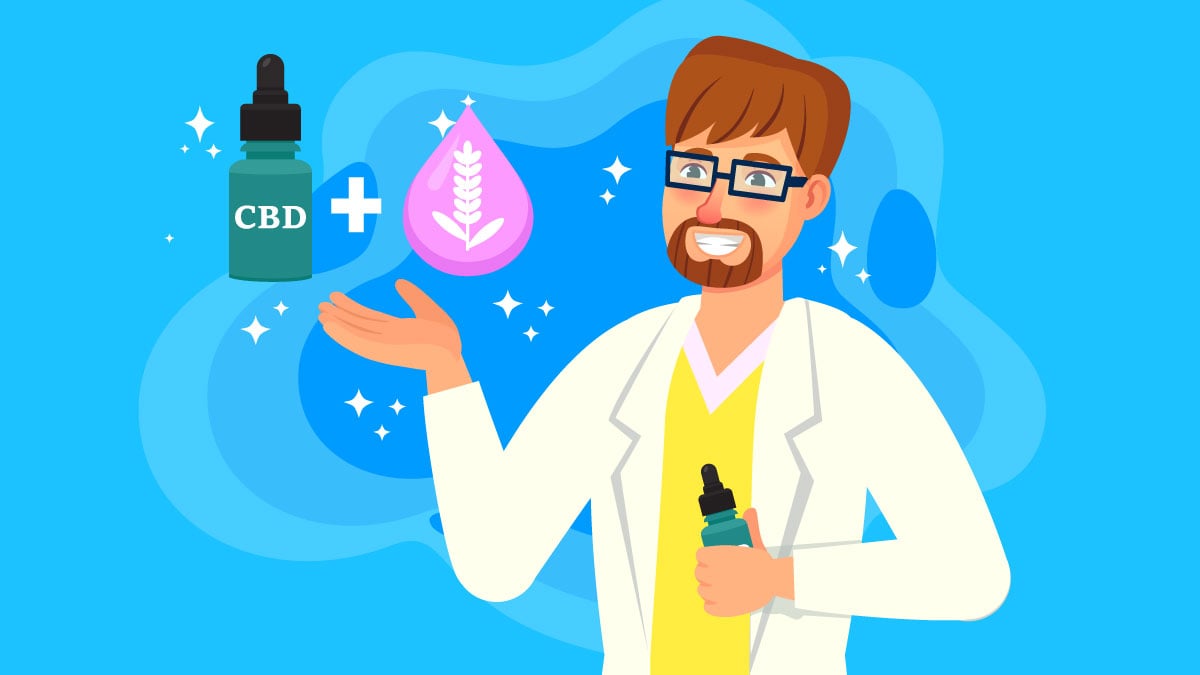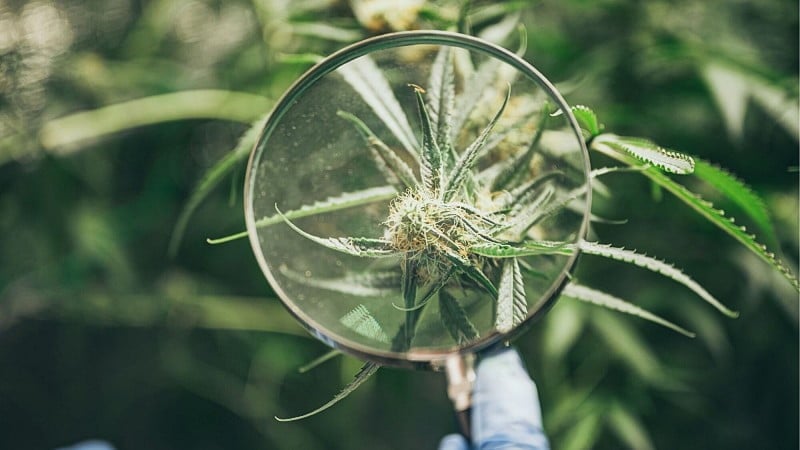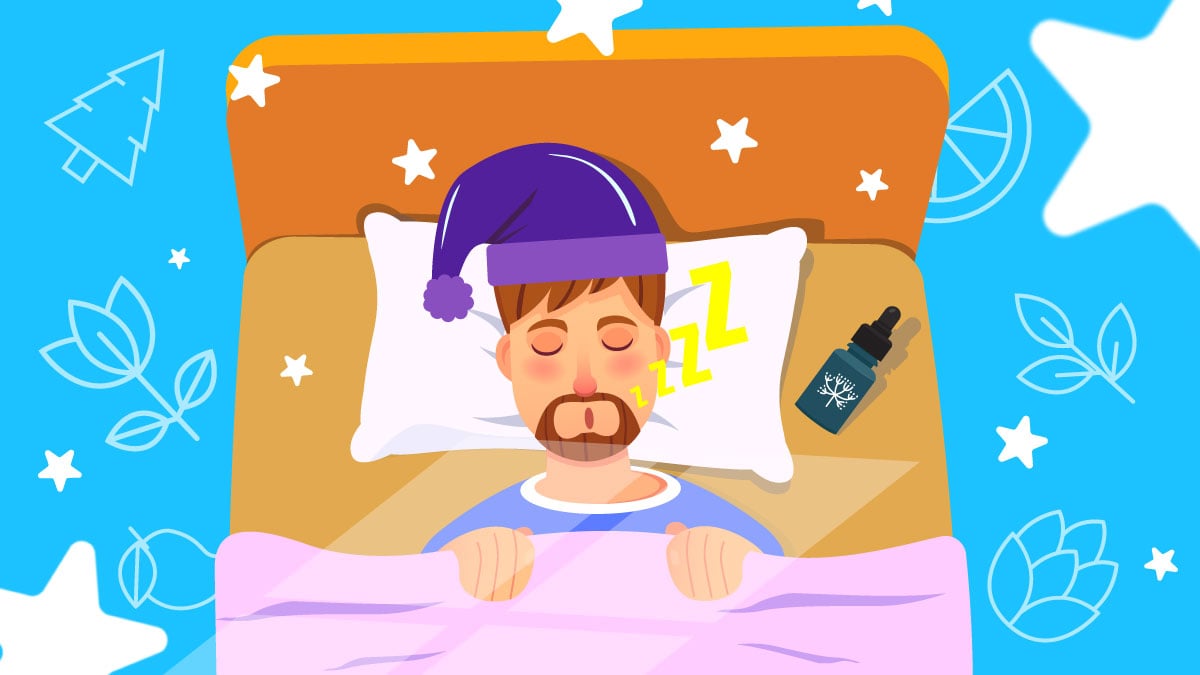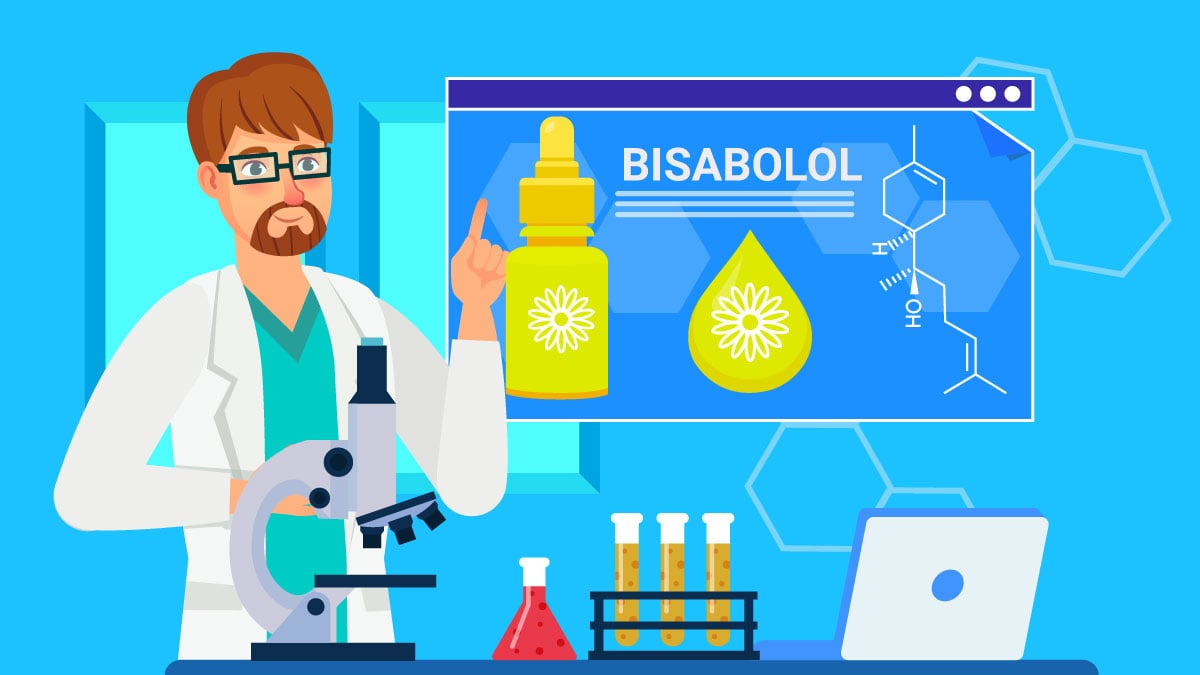CBD And Terpenes: What They Are & How They Work Together?

Recently, companies have been combining CBD with other cannabinoids like CBG and CBN to enhance the effects. They also combine flavoring agents to improve the bitter, grassy taste of full-spectrum hemp extract.
But what if you could bolster the effects of CBD and improve the taste with the same natural, cannabis-derived ingredients?
It turns out that you can — with a remarkable group of compounds called terpenes.
Why Add Terpenes to CBD?
A Gallup poll from August 2019 reported that 14% of Americans claim to use CBD products, and 40% use them for pain, 20% for anxiety, and 11% for sleep. The most significant subset of those users is between 18 and 29, which makes up 20% of those polled.
How are CBD and terpenes connected?
Cannabis plants specifically are abundant in myrcene, caryophyllene, and many other aromatic terpenes. The combinations of cannabinoids like CBD and these terpenes create what’s known as the entourage effect, an important part of using cannabis — but more on that later.
A large part of the reason is the terpenes themselves. What if you wanted something to support your sleep more than standard CBD? Maybe you want something to boost your focus when your biological clock says, “It’s time for your standard afternoon fatigue — head on the keyboard, Human!” You might need more of one terpene than another and more than what a particular plant might provide.
Many people who need more support than plain CBD add terpenes themselves or buy them with already added terpenes.
What Is The Entourage Effect?
Researchers suspect that cannabis compounds behave in synergy to control or modify the effects of the plant on humans and animals. They are currently investigating several terpenes for possible contributions to the entourage effect.
The term was initially coined to describe a suspected cooperative behavior or the effect of the compounds at the cellular level.
However, it’s now more often used as a term for extracts and whole plant collaboration. It includes cannabinoids, terpenes, and other botanical chemicals that may have bioactive properties.
Due to the newfound popularity of terpenes, cannabis enthusiasts are customizing their cannabis with these tasty little molecules and finding a whole new way to enjoy it.
Common Terpenes to Add to CBD
Many more studies on cannabis, CBD, and terpenes are published every year, and researchers regularly discover new benefits.
Here are some of the terpenes people are adding to their CBD oils to bolster their effects.
1. Humulene
This humulene terpene is found in hops, clove, basil, and more, so people add humulene to CBD for its appetite-suppressive and GABAergic (relaxing) effects.
2. Geraniol
Geraniol is found in rose oil, citrus, carrots, and lemongrass. It’s popular in the perfume industry and is often added to food products for its characteristic “floral” taste.
3. Linalool
This lavender-scented terpene is often added to CBD to support a sense of calm and relaxation. It’s found in the lavender plant as well as birch bark.
4. α-Pinene
Insects hate this terpene, but we love it! Pine trees, orange peels, rosemary, basil, and eucalyptus all contain α-pinene. Some add it to CBD to support lungs and mood (just try smelling a pine forest and not feeling happy).
5. Caryophyllene
This delicious caryophyllene terpene, found in cloves and cinnamon, binds easily to CB2 receptors in the human endocannabinoid system. This means it can offer the same support as cannabis without psychoactivity.
6. Limonene
Another delightful one, this citrusy limonene terpene, is prevalent in orange and lemon rinds as well as juniper. It’s used widely in cleaning products and might boost health and mood and improve skin penetration of other products.
7. Myrcene
A “people’s choice” in the terpene world, this myrcene terpene is the primary terpene found in Indica cannabis strains. It’s often added to CBD to support sleep and relaxation.
Other honorable mentions were β-caryophyllene, β-ocimene, and α-humulene. Considering the potential benefits to humans and animals, much more careful terpene research is called for because scientists didn’t control dosages and preparations in some studies, so more detailed work is necessary.
How to Use Terpenes With CBD
Now that you know why terpenes and CBD go so well together — how do you actually go about using them?
Here’s a simple step-by-step process for combining CBD with terpenes.
1. Choose Which Terpenes to Use
First, know why you want to add the terpenes. Are you adding them purely for flavor? Or are you hoping to boost a specific health benefit?
There are plenty of different terpene blends to choose from. You should be able to find an option that matches your personal preference or health goals.
If you’re using terpenes for a blend of both flavor and health benefits, check out our selection of strain-specific terpene blends. We create our strains to match existing cannabis strains using a variety of terpene extracts. Each strain has a unique set of health benefits ranging from stimulating to relaxing or sedative.
Once you’ve decided what terpenes you want to use and have ordered yourself a few bottles, it’s time to get mixing.
2. Mix Your Terpenes With CBD Oil
The next step is to get mixing. The most important thing to remember here is that a little bit of terpenes goes a long way. You should only be using a few mL of terpenes at a time — often much less.
A single bottle of terpene concentrates provides enough terpenes to prepare several bottles of CBD oil.
Terpenes aren’t safe to use on their own — they need to be diluted. The optimal dilution is between 3 and 5 percent of the final volume of liquid.
Most CBD oils come in 1 oz bottles (30 mL). To achieve a 5% concentration of terpenes, you’ll need to add 17 drops — not even a full milliliter of terpenes.
You can use the terpene bottle directly or use a clean glass dropper. One drop = ~0.03 mL, and one full dropper is equivalent to around 30 drops (1 mL).
If you’re only adding one terpene blend to your oil, this process is simple; use the chart below to see how many drops to add to your oil to achieve the target 3-5% terpene concentration.
If you’re using multiple terpenes, you’ll need to find the total number of drops and then divide it up into however many terpene extracts you plan on using.
How Much Terpenes to Add to CBD Oil
| CBD Oil Bottle Size | 3% Concentration | 5% Concentration |
| 10 mL CBD Oil | 10 Drops | 17 Drops |
| 30 mL CBD Oil | 30 Drops (1 mL) | 50 Drops (1.5 mL) |
| 60 mL CBD Oil | 60 Drops (2 mL) | 100 Drops (3 mL) |
| 100 mL CBD Oil | 100 Drops (3 mL) | 165 Drops (5 mL) |
3. Shake & Let Sit
Once you’ve added your terpenes to the bottle, seal it up, give it a shake, and let it sit for at least an hour before you use it. This will give the terpenes time to diffuse throughout the entire contents of the oil.
It’s a good idea to give your CBD oils a quick shake before you use them every time to make sure all the terpenes are distributed evenly throughout the oil.
Watch Out For CBD Terpene Scams
Be wary of the outlandish claims of non-scholarly publications. An internet search almost always reveals some fly-by-night company that overbought limonene for their cleaning products.
Then they throw up a website claiming it can cure a debilitating or fatal disease and advertise their “one weird hack” for solving numerous human ailments. They disappear into the ether once you’ve made your purchase.
Common sense should scream in your ear in those cases. For instance, there are many studies on terpenes’ effects on cell growth. Still, you can’t just smell orange and call your stage-IV pancreatic cancer cured. It doesn’t work that way, no matter how much we want it to.
Terpenes 101: What is a Terpene?
Appreciation of terpenes has been around since a caveman first brought a rose home to his cavewoman. But it was only recently (1866) that they received a name, and investigations into their usefulness began.
Humans have been extracting aromatic compounds — or essential oils — from plants since ancient times. The Ebers Papyrus, an old herbal healing text from approximately 1550 BCE (and copied or compiled from even older references), contains recipes for herbal remedies and includes instructions on cooking plants in oils and using the resulting compounds as medicine.
The plant preparations were rich in terpenes, which we can extract to high levels of purity today.
Terpenes protect the plants they’re made in, attract beneficial insects, and even help kill off competing fungi and bacteria.
When you smell a flower, your nose picks up on a terpene that also attracts pollinators. Likewise, when an insect gets near an orange peel, it experiences the terpene limonene, a terpene that repels it.
We use pure versions of these terpenes for aromatherapy, cleaners, skin products, food additives, perfumes, and much more.
Let’s look at how adding terpenes to CBD products is thought to support or diminish its effects.
Final Thoughts: Common Sense, CBD, & Terpenes
The way you take CBD with terpenes (through inhalation, topically, or consumption) can make a big difference in how you feel. When you vaporize material, you may be creating toxic chemicals. In addition, some terpenes are very irritating to the skin in certain concentrations.
All vaporized terpenes have a chance of irritating your sensitive and irreplaceable lung tissue. Any asthmatic who breathes in anything without consulting a pulmonologist is asking for trouble.
All of this means that you need to stay abreast of research and development in the terpene world. There are some notable discoveries of beneficial properties, but there are also some warnings with them.
When you embark on your terpene journey, know all the little things about your terpene that can support you and study what could harm you. “Nothing is perfectly safe” should be your mantra when you create your CBD with terpenes. Scientific research, safety, and a heaping helping of common sense should be your guides.
Of particular note are those red and yellow web pages advertising bigger-than-life claims for products. Claims like “cures asthma,” “gets rid of wrinkles and acne,” and “kills 100% of viruses and bacteria on contact” should not just set off alarm bells but get every snake oil klaxon in your head ringing at once.
CBD with terpenes may give you support for a large variety of discomforts. Remember that symptoms of anything can indicate dangerous underlying conditions, so seek treatment from a qualified physician. All of your health decisions should be informed, so see what’s going on before prescribing your own natural remedies.
References Cited
- Nahler, G., Jones, T. M., & Russo, E. B. (2019). Cannabidiol and contributions of major hemp phytocompounds to the “entourage effect”; possible mechanisms. J. Altern. Complementary Integr. Med, 5.
- Ferber, S. G., Namdar, D., Hen-Shoval, D., Eger, G., Koltai, H., Shoval, G., … & Weller, A. (2020). The “entourage effect”: terpenes coupled with cannabinoids for the treatment of mood disorders and anxiety disorders. Current neuropharmacology, 18(2), 87-96. [1]
- de Lacerda Leite, G. M., de Oliveira Barbosa, M., Lopes, M. J. P., de Araújo Delmondes, G., Bezerra, D. S., Araújo, I. M., … & Kerntof, M. R. (2021). Pharmacological and toxicological activities of α-humulene and its isomers: A systematic review. Trends in Food Science & Technology. [2]
- Soulimani, R., & Joshi, R. K. (2020). Toxicological aspects and pharmaco-therapeutic properties of linalool, a natural terpene derivative of essential oils: Literature studies. American Journal of Essential Oils and Natural Products, 8(4), 24-34.
- Kim, J. C., Dinh, T. V., Oh, H. K., Son, Y. S., Ahn, J. W., Song, K. Y., … & Kim, K. H. (2019). The potential benefits of therapeutic treatment using gaseous terpenes at ambient low levels. Applied Sciences, 9(21), 4507. [3]
- Gertsch, J., Leonti, M., Raduner, S., Racz, I., Chen, J. Z., Xie, X. Q., … & Zimmer, A. (2008). Beta-caryophyllene is a dietary cannabinoid. Proceedings of the National Academy of Sciences, 105(26), 9099-9104.
- Vieira, A. J., Beserra, F. P., Souza, M. C., Totti, B. M., & Rozza, A. L. (2018). Limonene: Aroma of innovation in health and disease. Chemico-biological interactions, 283, 97-106. [4]
- Jansen, C., Shimoda, L. M. N., Kawakami, J. K., Ang, L., Bacani, A. J., Baker, J. D., … & Turner, H. (2019). Myrcene and terpene regulation of TRPV1. Channels, 13(1), 344-366. [5]



